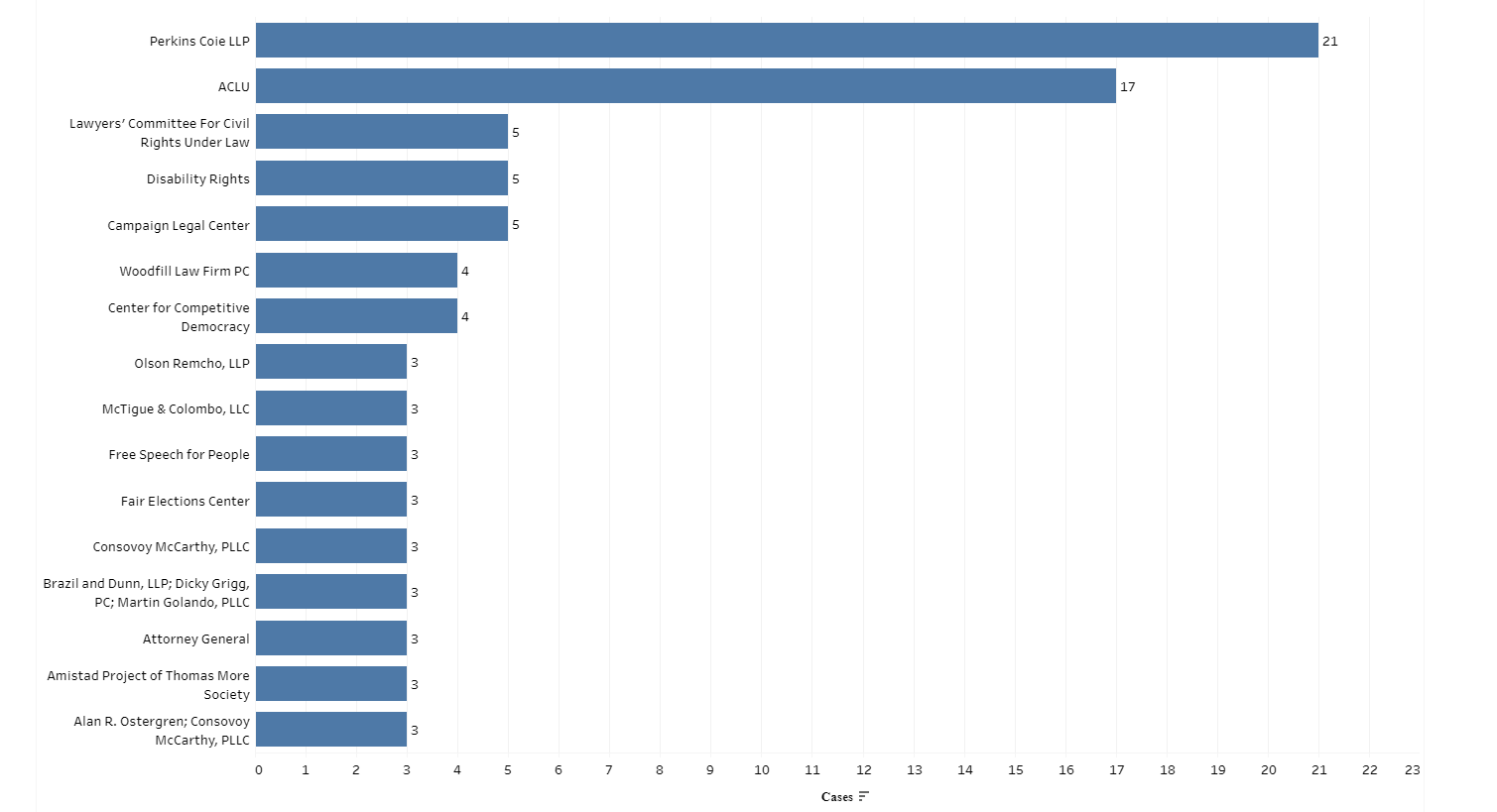
Ed. note: This article first appeared on The Juris Lab, a forum where “data analytics meets the law.” This article looks at pre-election litigation, and a future article will discuss post-election lawsuits.
Courts were involved in the 2020 election debacle like never before. Voting, a right that appears clear and self-explanatory on its face, reached a new level of complexity with various laws that placed restrictions on who can vote, how, and when.

Meet Your New Team: Intuit QuickBooks Unveils The Power Of AI Agents For Business Growth
The future of business is here, and it's powered by QuickBooks.
Judges stepped in in hundreds of instances to clarify the laws that were constitutional and to strike down laws that violated the Constitution. As with any legal issue that affects the nation, judges had differential roles based on their geographic locations. This post looks at pre-election voting related litigation by analyzing the major players and the hotbeds of litigation. It also looks at where the next epicenters in voting rights litigation may be located.
Many of the voting rights cases did not lead to straightforward outcomes, and judges needed to fashion remedies that account for both the promulgated laws and the rights of individual voters. One of the most active judges in litigation, Judge Eleanor Ross from the U.S. District Court for the Northern District of Georgia, provided an example of balancing such interests with her opinion in Cooper v. Raffensperger. This case dealt with ballot access for third party candidates in light of the Covid-19 pandemic.
Georgia had a strict signature requirement in place that plaintiffs requested waived due to the pandemic. Rather than agree entirely with either side, Judge Ross reduced the signature requirement by 30% for third-party candidates. Judge Ross was one of the judges with the most pre-election cases. Below is a graph of judges that heard at least three pre-election cases along with the party of their appointing presidents (data was culled from the Brennan Center and the Healthy Elections Project).


Let The Robots Do The Sh*t Work: How Legal AI Is Delivering Real Value
Legal professionals don’t need AI that promises magic. They need tools that make the sh*t work disappear and clear the path to creating more client value. This article explores how legal teams are rethinking AI - not as a disruption, but as a quiet force embedded in the everyday.
A majority of these judges were appointed by Democratic presidents. While judges appointed by Democratic presidents tend to side with individual rights over restrictive laws, as is evident from the example of Judge Ross, this is not always the case. The two appellate court judges that heard the most pre-election cases were Judge Easterbrook from the Seventh Circuit and Judge Southwick from the Fifth Circuit.
Next a look at where these lawsuits and appeals were located.

The state with the most cases was Michigan followed by Texas, Wisconsin, Pennsylvania, and California. This map gives a sense of where restrictive laws were challenged in most instances, although in some instances the suits were filed to prevent certain eases on voting restrictions. One example is in the case of Issa v. Newsom, where Republicans filed a lawsuit to thwart Governor Newsom’s order to send mail ballots to all California voters for the November general election.
These geographic locations correlate with the courts where these cases were filed. Now for the courts where these cases were located.

The most cases were heard in Western District of Wisconsin and in the Southern District of New York. One of the cases that garnered attention from the District Court for the Western District of Wisconsin was Common Cause v. Thomsen where Judge Petersen ruled on whether college IDs could be used for voting purposes. A noteworthy case in the District Court for the Southern District of New York was National Coalition on Black Civic Participation v. Wohl. Here, Judge Marrero ruled in favor of plaintiff’s preliminary injunction banning defendants from placing robocalls that made recipients fear negative repercussions for casting their votes in the election.
Who was involved in these lawsuits? The next figure shows firms and groups working on at least three of these cases.

Perkins Coie and the ACLU were far and away the most busy firms/groups involved in this litigation. Perkins Coie represented groups like the Voto Latino Foundation in Voto Latino v. Hobbs. Both firms/groups were involved in protecting voters’ rights along with many others.
The pre-election cases were only the tip of the iceberg though. These cases showed how every dimension of the election was scrutinized and contested. As it turns out, even with this thicket of court cases the election ran fairly smoothly. The next post looks at post-election litigation related to the presidential election results and at how a cottage industry has developed to challenge election procedures across several states.
Click here for data used in this post.
Adam Feldman runs the litigation consulting company Optimized Legal Solutions LLC. For more information write Adam at [email protected]. Find him on Twitter: @AdamSFeldman.